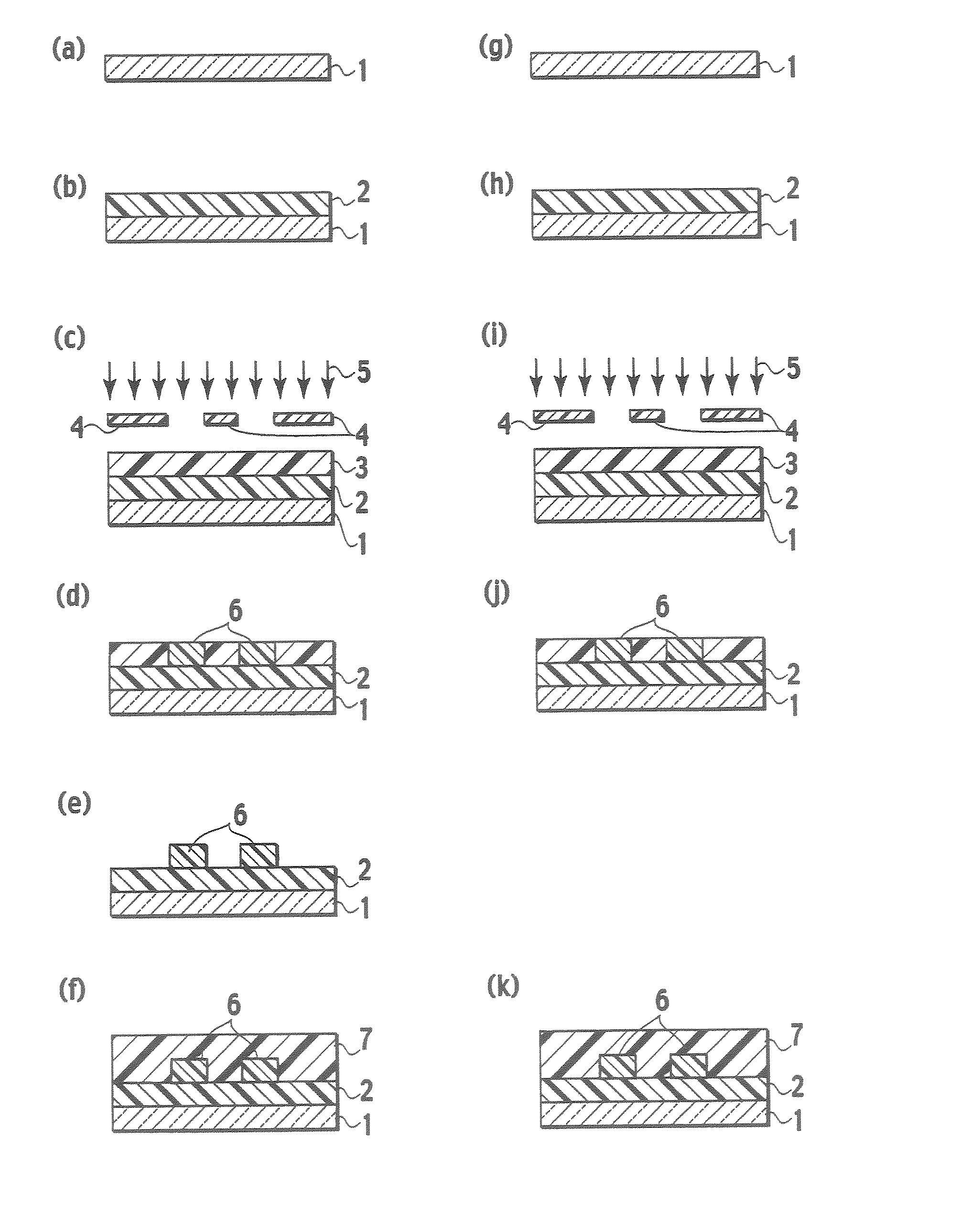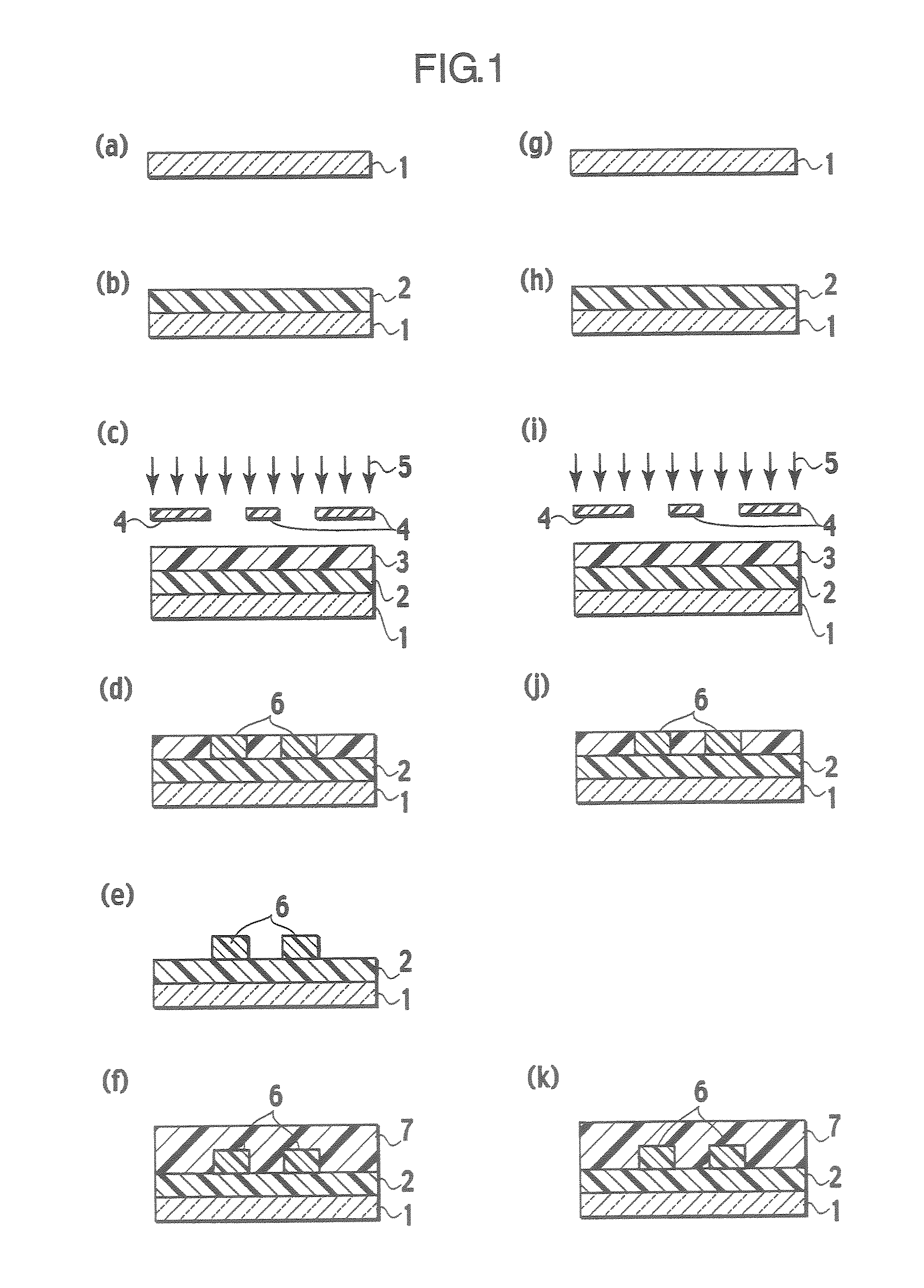Polymerizable Composition
a polymerizable composition and composition technology, applied in the direction of instruments, cladded optical fibres, optical elements, etc., can solve the problems of long curing process of adhesives, poor storage stability of conventional thermosetting adhesives at room temperature, and heat stress of semiconductor chips, so as to facilitate the formation of optical waveguides, facilitate curing in a short time, and low cost
- Summary
- Abstract
- Description
- Claims
- Application Information
AI Technical Summary
Benefits of technology
Problems solved by technology
Method used
Image
Examples
examples
[0197] The invention is further illustrated by following Examples, but the invention shall not be limited to the following Examples.
[0198] [Adhesive Composition]
[0199] The structures of the acid generators used in Examples and Comparatives Examples of the invention are shown below. The molar extinction coefficient was calculated from the measurement for the acid generators dissolved in acetonitrile at 25° C.
TABLE 1εStructureat 350 nmCompound(1)3700Compound(2)11800Compound(3)23200Compound(4)12000Compound(5)8490Compound(6)0Compound(7)2500Compound(8)0Compound(9)
example i-1
[0200] 2 parts by weight of a compound (1) as the acid generator (A) and 100 parts by weight of a bisphenol A type epoxy resin (trade name “EPIKOTE 828”, manufactured by Japan Epoxy Resins Co., Ltd.) as the cationic polymerizable compound (B) were mixed to prepare an adhesive composition. 0.5 g of the adhesive composition was applied to a copper lead frame at a uniform firm thickness, and irradiated with an ultraviolet ray having a wavelength of 365 nm at a dose of 3000 mJ / cm2 using an extra-high pressure mercury lamp. Subsequently a silicon chip was affixed to the surface coated with said adhesive composition, thus a bonded article was obtained. The obtained bonded article was evaluated for the following items. The results are shown in Table 2.
[0201] Examples and Comparatives Examples were evaluated by the following evaluation methods.
[0202] (1) Initial Adhesion Strength
[0203] The untreated bonded articles obtained in Examples or Comparatives Examples were measured for the shear...
examples i-2 to i-5
and Comparative Examples I-1 to I-6
[0212] Adhesive compositions were prepared and bonded articles comprising a silicon chip and a copper lead frame were obtained in the same manner as Example I-1 except that 2 parts by weight of the acid generator (A) in Example I-1 were replaced with 2 parts by weight each of the acid generators listed in Table 1, and the sensitizer was replaced with a specified amount of the compound listed in Table 2. The results of the evaluation on the obtained bonded articles for their initial adhesiveness and adhesiveness after high-temperature treatment are shown in Table 2.
PUM
| Property | Measurement | Unit |
|---|---|---|
| wavelength | aaaaa | aaaaa |
| temperature | aaaaa | aaaaa |
| temperature | aaaaa | aaaaa |
Abstract
Description
Claims
Application Information
 Login to View More
Login to View More - R&D
- Intellectual Property
- Life Sciences
- Materials
- Tech Scout
- Unparalleled Data Quality
- Higher Quality Content
- 60% Fewer Hallucinations
Browse by: Latest US Patents, China's latest patents, Technical Efficacy Thesaurus, Application Domain, Technology Topic, Popular Technical Reports.
© 2025 PatSnap. All rights reserved.Legal|Privacy policy|Modern Slavery Act Transparency Statement|Sitemap|About US| Contact US: help@patsnap.com



